


People visit the Manas national wetland park in Manas County, Changji Hui Autonomous Prefecture, northwest China's Xinjiang Uygur Autonomous Region, Aug. 10, 2025. In Xinjiang, new wetlands such as the Manas national wetland park and the Lalikun wetland nature reserve have emerged near the border of Gurbantunggut Desert and Taklimakan Desert, acting as important ecological shelters for migrant birds and safeguarding the biodiversity and oases in the region. (Xinhua/Zhou Jiayi)
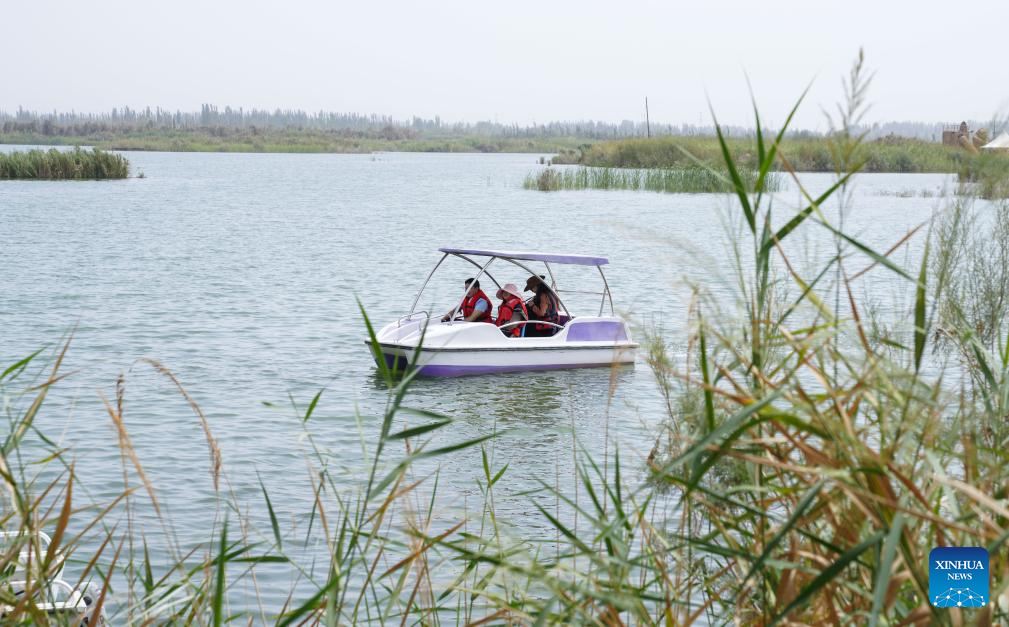
People take a boat at the Lalikun wetland nature reserve in Moyu County of Hotan Prefecture, northwest China's Xinjiang Uygur Autonomous Region, Aug. 6, 2025. In Xinjiang, new wetlands such as the Manas national wetland park and the Lalikun wetland nature reserve have emerged near the border of Gurbantunggut Desert and Taklimakan Desert, acting as important ecological shelters for migrant birds and safeguarding the biodiversity and oases in the region. (Xinhua/Zhou Jiayi)

People visit an exhibition hall at the Lalikun wetland nature reserve in Moyu County of Hotan Prefecture, northwest China's Xinjiang Uygur Autonomous Region, Aug. 6, 2025. In Xinjiang, new wetlands such as the Manas national wetland park and the Lalikun wetland nature reserve have emerged near the border of Gurbantunggut Desert and Taklimakan Desert, acting as important ecological shelters for migrant birds and safeguarding the biodiversity and oases in the region. (Xinhua/Zhou Jiayi)
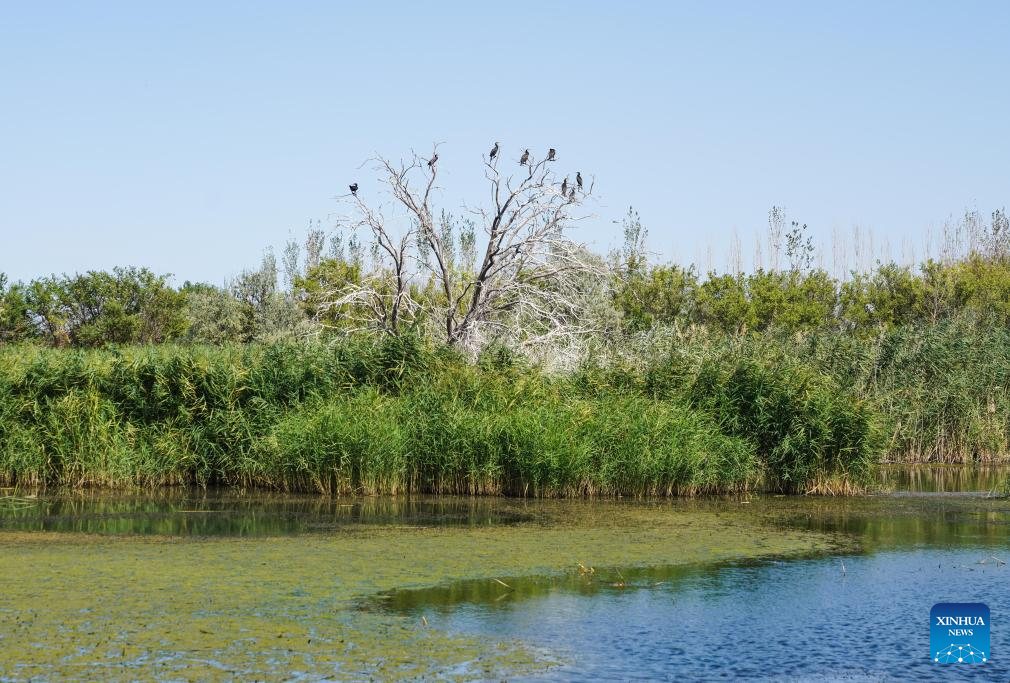
Cormorants rest on branches at the Manas national wetland park in Manas County, Changji Hui Autonomous Prefecture, northwest China's Xinjiang Uygur Autonomous Region, Aug. 10, 2025. In Xinjiang, new wetlands such as the Manas national wetland park and the Lalikun wetland nature reserve have emerged near the border of Gurbantunggut Desert and Taklimakan Desert, acting as important ecological shelters for migrant birds and safeguarding the biodiversity and oases in the region. (Xinhua/Zhou Jiayi)
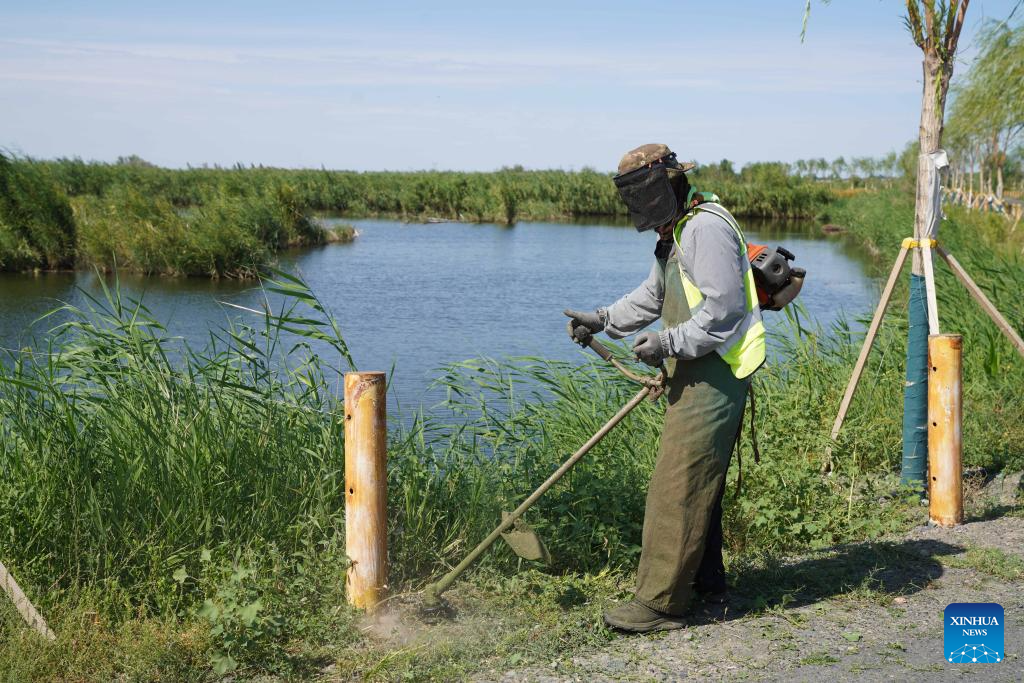
A worker cleans weed at the Manas national wetland park in Manas County, Changji Hui Autonomous Prefecture, northwest China's Xinjiang Uygur Autonomous Region, Aug. 10, 2025. In Xinjiang, new wetlands such as the Manas national wetland park and the Lalikun wetland nature reserve have emerged near the border of Gurbantunggut Desert and Taklimakan Desert, acting as important ecological shelters for migrant birds and safeguarding the biodiversity and oases in the region. (Xinhua/Zhou Jiayi)
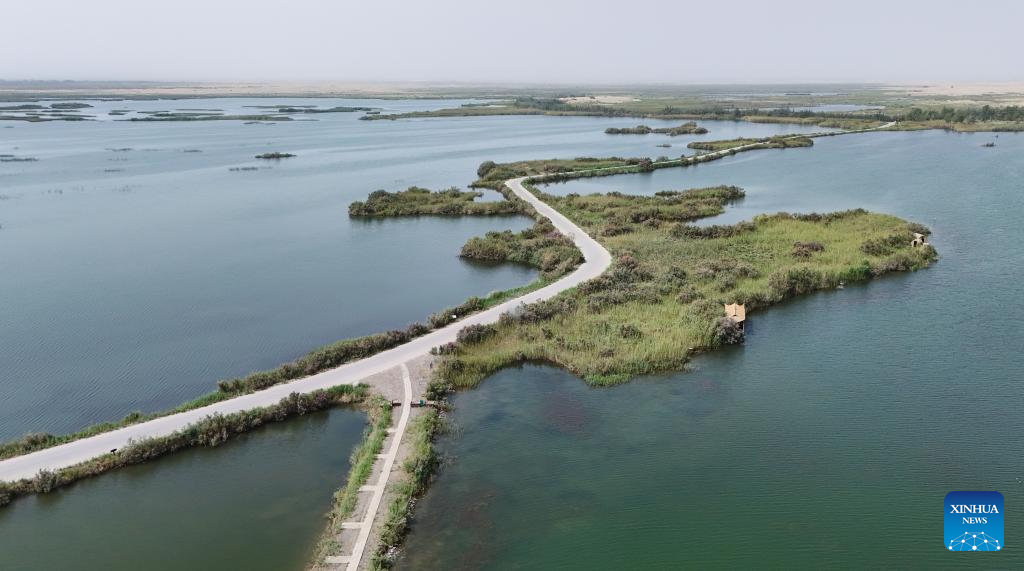
A drone photo taken on Aug. 6, 2025 shows the Lalikun wetland nature reserve in Moyu County of Hotan Prefecture, northwest China's Xinjiang Uygur Autonomous Region. In Xinjiang, new wetlands such as the Manas national wetland park and the Lalikun wetland nature reserve have emerged near the border of Gurbantunggut Desert and Taklimakan Desert, acting as important ecological shelters for migrant birds and safeguarding the biodiversity and oases in the region. (Xinhua/Zhou Jiayi)
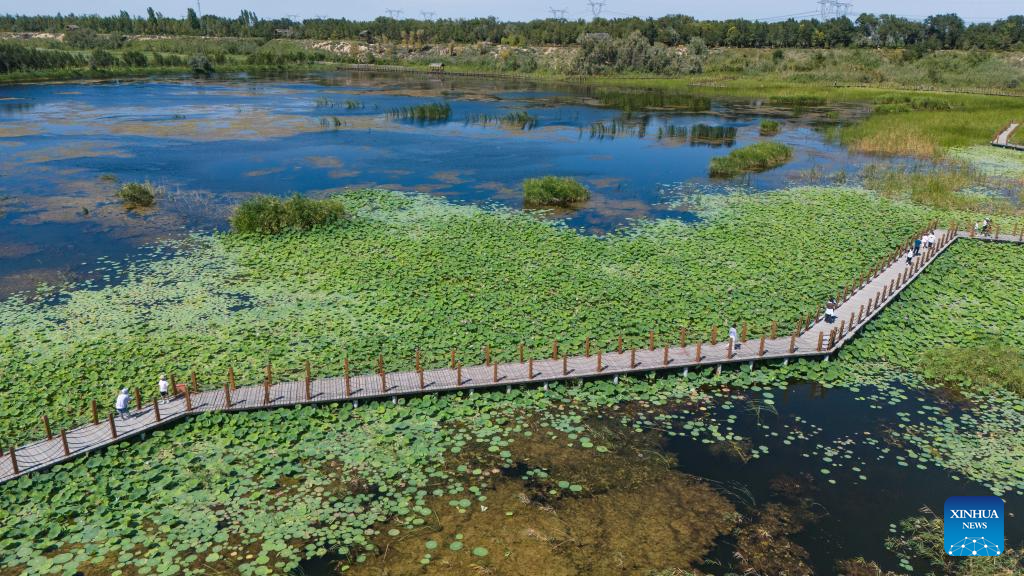
A drone photo taken on Aug. 10, 2025 shows the Manas national wetland park in Manas County, Changji Hui Autonomous Prefecture, northwest China's Xinjiang Uygur Autonomous Region. In Xinjiang, new wetlands such as the Manas national wetland park and the Lalikun wetland nature reserve have emerged near the border of Gurbantunggut Desert and Taklimakan Desert, acting as important ecological shelters for migrant birds and safeguarding the biodiversity and oases in the region. (Xinhua/Zhou Jiayi)
点击右上角![]() 微信好友
微信好友
 朋友圈
朋友圈

请使用浏览器分享功能进行分享
